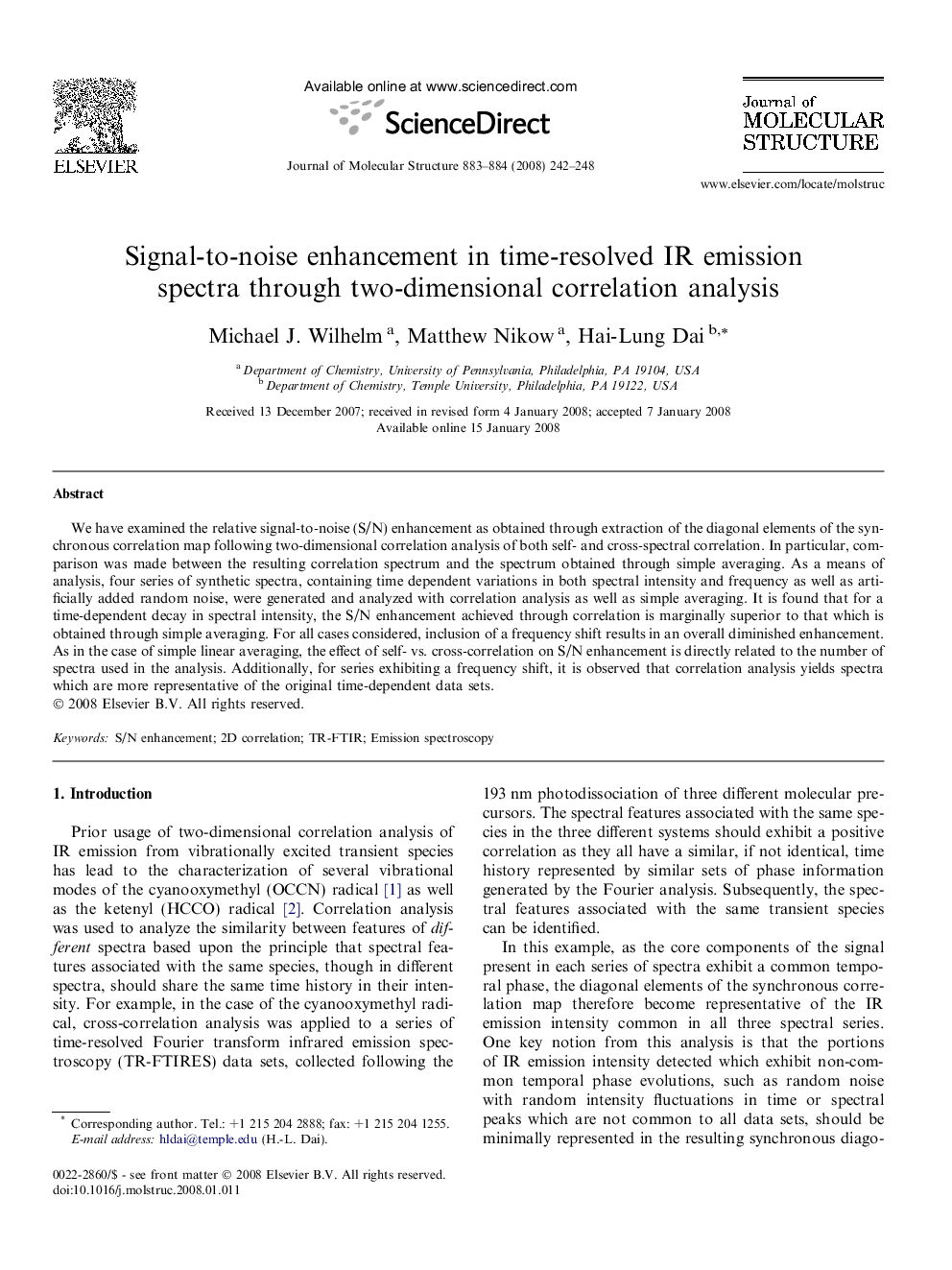| Article ID | Journal | Published Year | Pages | File Type |
|---|---|---|---|---|
| 1407332 | Journal of Molecular Structure | 2008 | 7 Pages |
Abstract
We have examined the relative signal-to-noise (S/N) enhancement as obtained through extraction of the diagonal elements of the synchronous correlation map following two-dimensional correlation analysis of both self- and cross-spectral correlation. In particular, comparison was made between the resulting correlation spectrum and the spectrum obtained through simple averaging. As a means of analysis, four series of synthetic spectra, containing time dependent variations in both spectral intensity and frequency as well as artificially added random noise, were generated and analyzed with correlation analysis as well as simple averaging. It is found that for a time-dependent decay in spectral intensity, the S/N enhancement achieved through correlation is marginally superior to that which is obtained through simple averaging. For all cases considered, inclusion of a frequency shift results in an overall diminished enhancement. As in the case of simple linear averaging, the effect of self- vs. cross-correlation on S/N enhancement is directly related to the number of spectra used in the analysis. Additionally, for series exhibiting a frequency shift, it is observed that correlation analysis yields spectra which are more representative of the original time-dependent data sets.
Keywords
Related Topics
Physical Sciences and Engineering
Chemistry
Organic Chemistry
Authors
Michael J. Wilhelm, Matthew Nikow, Hai-Lung Dai,
